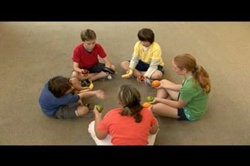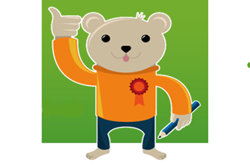digIT Robotics workbook
This brief lesson provides an introduction to coding MakerBots (mBots) using a block language. It provides introductory information about the robot's sensors, motors and microcontroller so students can control the mBot.
Additional details
| Year band(s) | 5-6 |
|---|---|
| Content type | Student challenges, Lesson ideas |
| Format | Document |
| Australian Curriculum Digital Technologies code(s) |
AC9TDI6K01
Investigate the main internal components of common digital systems and their function
AC9TDI6P01
Define problems with given or co developed design criteria and by creating user stories
AC9TDI6P02
Design algorithms involving multiple alternatives (branching) and iteration
AC9TDI6P05
Implement algorithms as visual programs involving control structures, variables and input |
| Technologies & Programming Languages | Robotics and drones |
| Keywords | Robotics, Programming, mBot |
| Organisation | Australian Maths Trust. |
| Copyright | May be subject to Copyright Statutory Licence Act. |
Related resources
-

Classroom ideas: Micro:bit Environmental Measurement (visual and general-purpose programming) (Years 5-8)
Investigating environmental data with Micro:bits: This tutorial shows the coding needed for digital solutions of some environmental issues that can be created using pseudocode and visual programming.
-

Classroom ideas F-10: Aboriginal and Torres Strait Islander connections to Digital Technologies
This resource provides examples of ways Aboriginal and Torres Strait Islander Histories and Cultures can be integrated into Digital Technologies. Examples include 'classification and sorting data' and 'designing solutions'.
-

Computational thinking poster
A poster/infographic that gives a brief overview of the concepts related to computational thinking.
-

DIY micro:bit metal detector (Years 5-6)
This activity shows one way to incorporate Digital Technologies into a goldfields unit in an authentic way using a micro:bit.
-

Visual programming with Scratch (Years 3-6)
This resource comprises a collection of sample activities that incorporate visual programming (Scratch) into teaching and learning programs.
-

Exploring digital systems unplugged: networks (Years 5-6)
Simple ideas for learning about a digital systems such as a network, unplugged.
-

CAS Barefoot
A broad collection of online resources to support teachers to develop and implement computational thinking, concepts and computer programming. Free log in required to access materials.
-

Computational Thinking – 6 learner guides
This site offers a range of resources to help teach computational thinking and its components.
